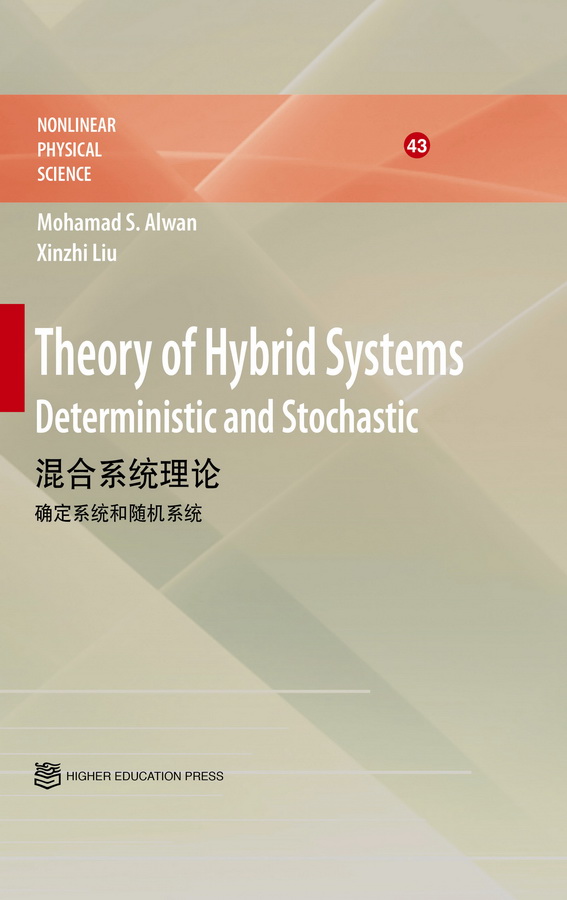数据结构与算法分析(C++版)(第三版)(英文版) / 国外计算机科学教材系列
定价:¥99.00
作者: Clifford A. Shaffer
出版时间:2013-01
出版社:电子工业出版社
试读
- 电子工业出版社
- 9787121192609
- 1-1
- 160482
- 47151189-9
- 平装
- 16开
- 2013-01
- 1273
- 612
- TP311.12
- 计算机科学与技术(工学/理学)
- 本科 研究生(硕士、EMBA、MBA、MPA、博士)
内容简介
本书采用程序员*用的面向对象C++语言来描述数据结构和算法,并把数据结构原理和算法分析技术有机地结合在一起,系统介绍了各种类型的数据结构和排序、检索的各种方法。作者非常注意对每一种数据结构的不同存储方法及有关算法进行分析比较。书中还引入了一些比较高级的数据结构与先进的算法分析技术,并介绍了可计算性理论的一般知识。本版的重要改进在于引入了参数化的模板,从而提高了算法中数据类型的通用性,支持高效的代码重用。
目录
Preface
Part I Preliminaries
Chapter 1 Data Structures and Algorithms
1.1 A Philosophy of Data Structures
1.1.1 The Need for Data Structures
1.1.2 Costs and Benefits
1.2 Abstract Data Types and Data Structures
1.3 Design Patterns
1.3.1 Flyweight
1.3.2 Visitor
1.3.3 Composite
1.3.4 Strategy
1.4 Problems, Algorithms, and Programs
1.5 Further Reading
1.6 Exercises
Chapter 2 Mathematical Preliminaries
2.1 Sets and Relations
2.2 Miscellaneous Notation
2.3 Logarithms
2.4 Summations and Recurrences
2.5 Recursion
2.6 Mathematical Proof Techniques
2.6.1 Direct Proof
2.6.2 Proof by Contradiction
2.6.3 Proof by Mathematical Induction
2.7 Estimation
2.8 Further Reading
2.9 Exercises
Chapter 3 Algorithm Analysis
3.1 Introduction
3.2 Best, Worst, and Average Cases
3.3 A Faster Computer, or a Faster Algorithm?
3.4 Asymptotic Analysis
3.4.1 Upper Bounds
3.4.2 Lower Bounds
3.4.3 Notation
3.4.4 Simplifying Rules
3.4.5 Classifying Functions
3.5 Calculating the Running Time for a Program
3.6 Analyzing Problems
3.7 Common Misunderstandings
3.8 Multiple Parameters
3.9 Space Bounds
3.10 Speeding Up Your Programs
3.11 Empirical Analysis
3.12 Further Reading
3.13 Exercises
3.14 Projects
Part II Fundamental Data Structures
Chapter 4 Lists, Stacks, and Queues
4.1 Lists
4.1.1 Array-Based List Implementation
4.1.2 Linked Lists
4.1.3 Comparison of List Implementations
4.1.4 Element Implementations
4.1.5 Doubly Linked Lists
4.2 Stacks
4.2.1 Array-Based Stacks
4.2.2 Linked Stacks
4.2.3 Comparison of Array-Based and Linked Stacks
4.2.4 Implementing Recursion
4.3 Queues
4.3.1 Array-Based Queues
4.3.2 Linked Queues
4.3.3 Comparison of Array-Based and Linked Queues
4.4 Dictionaries
4.5 Further Reading
4.6 Exercises
4.7 Projects
Chapter 5 Binary Trees
5.1 Definitions and Properties
5.1.1 The Full Binary Tree Theorem
5.1.2 A Binary Tree Node ADT
5.2 Binary Tree Traversals
5.3 Binary Tree Node Implementations
5.3.1 Pointer-Based Node Implementations
5.3.2 Space Requirements
5.3.3 Array Implementation for Complete Binary Trees
5.4 Binary Search Trees
5.5 Heaps and Priority Queues
5.6 Huffman Coding Trees
5.6.1 Building Huffman Coding Trees
5.6.2 Assigning and Using Huffman Codes
5.6.3 Search in Huffman Trees
5.7 Further Reading
5.8 Exercises
5.9 Projects
Chapter 6 Non-Binary Trees
6.1 General Tree Definitions and Terminology
6.1.1 An ADT for General Tree Nodes
6.1.2 General Tree Traversals
6.2 The Parent Pointer Implementation
6.3 General Tree Implementations
6.3.1 List of Children
6.3.2 The Left-Child/Right-Sibling Implementation
6.3.3 Dynamic Node Implementations
6.3.4 Dynamic “Left-Child/Right-Sibling” Implementation
6.4 K-ary Trees
6.5 Sequential Tree Implementations
6.6 Further Reading
6.7 Exercises
6.8 Projects
Part III Sorting and Searching
Chapter 7 Internal Sorting
7.1 Sorting Terminology and Notation
7.2 Three (n2) Sorting Algorithms
7.2.1 Insertion Sort
7.2.2 Bubble Sort
7.2.3 Selection Sort
7.2.4 The Cost of Exchange Sorting
7.3 Shellsort
7.4 Mergesort
7.5 Quicksort
7.6 Heapsort
7.7 Binsort and Radix Sort
7.8 An Empirical Comparison of Sorting Algorithms
7.9 Lower Bounds for Sorting
7.10 Further Reading
7.11 Exercises
7.12 Projects
Chapter 8 File Processing and External Sorting
8.1 Primary versus Secondary Storage
8.2 Disk Drives
8.2.1 Disk Drive Architecture
8.2.2 Disk Access Costs
8.3 Buffers and Buffer Pools
8.4 The Programmer’s View of Files
8.5 External Sorting
8.5.1 Simple Approaches to External Sorting
8.5.2 Replacement Selection
8.5.3 Multiway Merging
8.6 Further Reading
8.7 Exercises
8.8 Projects
Chapter 9 Searching
9.1 Searching Unsorted and Sorted Arrays
9.2 Self-Organizing Lists
9.3 Bit Vectors for Representing Sets
9.4 Hashing
9.4.1 Hash Functions
9.4.2 Open Hashing
9.4.3 Closed Hashing
9.4.4 Analysis of Closed Hashing
9.4.5 Deletion
9.5 Further Reading
9.6 Exercises
9.7 Projects
Chapter 10 Indexing
10.1 Linear Indexing
10.2 ISAM
10.3 Tree-based Indexing
10.4 2-3 Trees
10.5 B-Trees
10.5.1 B+-Trees
10.5.2 B-Tree Analysis
10.6 Further Reading
10.7 Exercises
10.8 Projects
Part IV Advanced Data Structures
Chapter 11 Graphs
11.1 Terminology and Representations
11.2 Graph Implementations
11.3 Graph Traversals
11.3.1 Depth-First Search
11.3.2 Breadth-First Search
11.3.3 Topological Sort
11.4 Shortest-Paths Problems
11.4.1 Single-Source Shortest Paths
11.5 Minimum-Cost Spanning Trees
11.5.1 Prim’s Algorithm
11.5.2 Kruskal’s Algorithm
11.6 Further Reading
11.7 Exercises
11.8 Projects
Chapter 12 Lists and Arrays Revisited
12.1 Multilists
12.2 Matrix Representations
12.3 Memory Management
12.3.1 Dynamic Storage Allocation
12.3.2 Failure Policies and Garbage Collection
12.4 Further Reading
12.5 Exercises
12.6 Projects
Chapter 13 Advanced Tree Structures
13.1 Tries
13.2 Balanced Trees
13.2.1 The AVL Tree
13.2.2 The Splay Tree
13.3 Spatial Data Structures
13.3.1 The K-D Tree
13.3.2 The PR quadtree
13.3.3 Other Point Data Structures
13.3.4 Other Spatial Data Structures
13.4 Further Reading
13.5 Exercises
13.6 Projects
Part V Theory of Algorithms
14 Analysis Techniques
14.1 Summation Techniques
14.2 Recurrence Relations
14.2.1 Estimating Upper and Lower Bounds
14.2.2 Expanding Recurrences
14.2.3 Divide and Conquer Recurrences
14.2.4 Average-Case Analysis of Quicksort
14.3 Amortized Analysis
14.4 Further Reading
14.5 Exercises
14.6 Projects
Chapter 15 Lower Bounds
15.1 Introduction to Lower Bounds Proofs
15.2 Lower Bounds on Searching Lists
15.2.1 Searching in Unsorted Lists
15.2.2 Searching in Sorted Lists
15.3 Finding the Maximum Value
15.4 Adversarial Lower Bounds Proofs
15.5 State Space Lower Bounds Proofs
15.6 Finding the ith Best Element
15.7 Optimal Sorting
15.8 Further Reading
15.9 Exercises
15.10 Projects
Chapter 16 Patterns of Algorithms
16.1 Dynamic Programming
16.1.1 The Knapsack Problem
16.1.2 All-Pairs Shortest Paths
16.2 Randomized Algorithms
16.2.1 Randomized algorithms for finding large values
16.2.2 Skip Lists
16.3 Numerical Algorithms
16.3.1 Exponentiation
16.3.2 Largest Common Factor
16.3.3 Matrix Multiplication
16.3.4 Random Numbers
16.3.5 The Fast Fourier Transform
16.4 Further Reading
16.5 Exercises
16.6 Projects
Chapter 17 Limits to Computation
17.1 Reductions
17.2 Hard Problems
17.2.1 The Theory of NP-Completeness
17.2.2 NP-Completeness Proofs
17.2.3 Coping with NP-Complete Problems
17.3 Impossible Problems
17.3.1 Uncountability
17.3.2 The Halting Problem Is Unsolvable
17.4 Further Reading
17.5 Exercises
17.6 Projects
Part VI APPENDIX
A Utility Functions
Bibliography
Index
Part I Preliminaries
Chapter 1 Data Structures and Algorithms
1.1 A Philosophy of Data Structures
1.1.1 The Need for Data Structures
1.1.2 Costs and Benefits
1.2 Abstract Data Types and Data Structures
1.3 Design Patterns
1.3.1 Flyweight
1.3.2 Visitor
1.3.3 Composite
1.3.4 Strategy
1.4 Problems, Algorithms, and Programs
1.5 Further Reading
1.6 Exercises
Chapter 2 Mathematical Preliminaries
2.1 Sets and Relations
2.2 Miscellaneous Notation
2.3 Logarithms
2.4 Summations and Recurrences
2.5 Recursion
2.6 Mathematical Proof Techniques
2.6.1 Direct Proof
2.6.2 Proof by Contradiction
2.6.3 Proof by Mathematical Induction
2.7 Estimation
2.8 Further Reading
2.9 Exercises
Chapter 3 Algorithm Analysis
3.1 Introduction
3.2 Best, Worst, and Average Cases
3.3 A Faster Computer, or a Faster Algorithm?
3.4 Asymptotic Analysis
3.4.1 Upper Bounds
3.4.2 Lower Bounds
3.4.3 Notation
3.4.4 Simplifying Rules
3.4.5 Classifying Functions
3.5 Calculating the Running Time for a Program
3.6 Analyzing Problems
3.7 Common Misunderstandings
3.8 Multiple Parameters
3.9 Space Bounds
3.10 Speeding Up Your Programs
3.11 Empirical Analysis
3.12 Further Reading
3.13 Exercises
3.14 Projects
Part II Fundamental Data Structures
Chapter 4 Lists, Stacks, and Queues
4.1 Lists
4.1.1 Array-Based List Implementation
4.1.2 Linked Lists
4.1.3 Comparison of List Implementations
4.1.4 Element Implementations
4.1.5 Doubly Linked Lists
4.2 Stacks
4.2.1 Array-Based Stacks
4.2.2 Linked Stacks
4.2.3 Comparison of Array-Based and Linked Stacks
4.2.4 Implementing Recursion
4.3 Queues
4.3.1 Array-Based Queues
4.3.2 Linked Queues
4.3.3 Comparison of Array-Based and Linked Queues
4.4 Dictionaries
4.5 Further Reading
4.6 Exercises
4.7 Projects
Chapter 5 Binary Trees
5.1 Definitions and Properties
5.1.1 The Full Binary Tree Theorem
5.1.2 A Binary Tree Node ADT
5.2 Binary Tree Traversals
5.3 Binary Tree Node Implementations
5.3.1 Pointer-Based Node Implementations
5.3.2 Space Requirements
5.3.3 Array Implementation for Complete Binary Trees
5.4 Binary Search Trees
5.5 Heaps and Priority Queues
5.6 Huffman Coding Trees
5.6.1 Building Huffman Coding Trees
5.6.2 Assigning and Using Huffman Codes
5.6.3 Search in Huffman Trees
5.7 Further Reading
5.8 Exercises
5.9 Projects
Chapter 6 Non-Binary Trees
6.1 General Tree Definitions and Terminology
6.1.1 An ADT for General Tree Nodes
6.1.2 General Tree Traversals
6.2 The Parent Pointer Implementation
6.3 General Tree Implementations
6.3.1 List of Children
6.3.2 The Left-Child/Right-Sibling Implementation
6.3.3 Dynamic Node Implementations
6.3.4 Dynamic “Left-Child/Right-Sibling” Implementation
6.4 K-ary Trees
6.5 Sequential Tree Implementations
6.6 Further Reading
6.7 Exercises
6.8 Projects
Part III Sorting and Searching
Chapter 7 Internal Sorting
7.1 Sorting Terminology and Notation
7.2 Three (n2) Sorting Algorithms
7.2.1 Insertion Sort
7.2.2 Bubble Sort
7.2.3 Selection Sort
7.2.4 The Cost of Exchange Sorting
7.3 Shellsort
7.4 Mergesort
7.5 Quicksort
7.6 Heapsort
7.7 Binsort and Radix Sort
7.8 An Empirical Comparison of Sorting Algorithms
7.9 Lower Bounds for Sorting
7.10 Further Reading
7.11 Exercises
7.12 Projects
Chapter 8 File Processing and External Sorting
8.1 Primary versus Secondary Storage
8.2 Disk Drives
8.2.1 Disk Drive Architecture
8.2.2 Disk Access Costs
8.3 Buffers and Buffer Pools
8.4 The Programmer’s View of Files
8.5 External Sorting
8.5.1 Simple Approaches to External Sorting
8.5.2 Replacement Selection
8.5.3 Multiway Merging
8.6 Further Reading
8.7 Exercises
8.8 Projects
Chapter 9 Searching
9.1 Searching Unsorted and Sorted Arrays
9.2 Self-Organizing Lists
9.3 Bit Vectors for Representing Sets
9.4 Hashing
9.4.1 Hash Functions
9.4.2 Open Hashing
9.4.3 Closed Hashing
9.4.4 Analysis of Closed Hashing
9.4.5 Deletion
9.5 Further Reading
9.6 Exercises
9.7 Projects
Chapter 10 Indexing
10.1 Linear Indexing
10.2 ISAM
10.3 Tree-based Indexing
10.4 2-3 Trees
10.5 B-Trees
10.5.1 B+-Trees
10.5.2 B-Tree Analysis
10.6 Further Reading
10.7 Exercises
10.8 Projects
Part IV Advanced Data Structures
Chapter 11 Graphs
11.1 Terminology and Representations
11.2 Graph Implementations
11.3 Graph Traversals
11.3.1 Depth-First Search
11.3.2 Breadth-First Search
11.3.3 Topological Sort
11.4 Shortest-Paths Problems
11.4.1 Single-Source Shortest Paths
11.5 Minimum-Cost Spanning Trees
11.5.1 Prim’s Algorithm
11.5.2 Kruskal’s Algorithm
11.6 Further Reading
11.7 Exercises
11.8 Projects
Chapter 12 Lists and Arrays Revisited
12.1 Multilists
12.2 Matrix Representations
12.3 Memory Management
12.3.1 Dynamic Storage Allocation
12.3.2 Failure Policies and Garbage Collection
12.4 Further Reading
12.5 Exercises
12.6 Projects
Chapter 13 Advanced Tree Structures
13.1 Tries
13.2 Balanced Trees
13.2.1 The AVL Tree
13.2.2 The Splay Tree
13.3 Spatial Data Structures
13.3.1 The K-D Tree
13.3.2 The PR quadtree
13.3.3 Other Point Data Structures
13.3.4 Other Spatial Data Structures
13.4 Further Reading
13.5 Exercises
13.6 Projects
Part V Theory of Algorithms
14 Analysis Techniques
14.1 Summation Techniques
14.2 Recurrence Relations
14.2.1 Estimating Upper and Lower Bounds
14.2.2 Expanding Recurrences
14.2.3 Divide and Conquer Recurrences
14.2.4 Average-Case Analysis of Quicksort
14.3 Amortized Analysis
14.4 Further Reading
14.5 Exercises
14.6 Projects
Chapter 15 Lower Bounds
15.1 Introduction to Lower Bounds Proofs
15.2 Lower Bounds on Searching Lists
15.2.1 Searching in Unsorted Lists
15.2.2 Searching in Sorted Lists
15.3 Finding the Maximum Value
15.4 Adversarial Lower Bounds Proofs
15.5 State Space Lower Bounds Proofs
15.6 Finding the ith Best Element
15.7 Optimal Sorting
15.8 Further Reading
15.9 Exercises
15.10 Projects
Chapter 16 Patterns of Algorithms
16.1 Dynamic Programming
16.1.1 The Knapsack Problem
16.1.2 All-Pairs Shortest Paths
16.2 Randomized Algorithms
16.2.1 Randomized algorithms for finding large values
16.2.2 Skip Lists
16.3 Numerical Algorithms
16.3.1 Exponentiation
16.3.2 Largest Common Factor
16.3.3 Matrix Multiplication
16.3.4 Random Numbers
16.3.5 The Fast Fourier Transform
16.4 Further Reading
16.5 Exercises
16.6 Projects
Chapter 17 Limits to Computation
17.1 Reductions
17.2 Hard Problems
17.2.1 The Theory of NP-Completeness
17.2.2 NP-Completeness Proofs
17.2.3 Coping with NP-Complete Problems
17.3 Impossible Problems
17.3.1 Uncountability
17.3.2 The Halting Problem Is Unsolvable
17.4 Further Reading
17.5 Exercises
17.6 Projects
Part VI APPENDIX
A Utility Functions
Bibliography
Index










